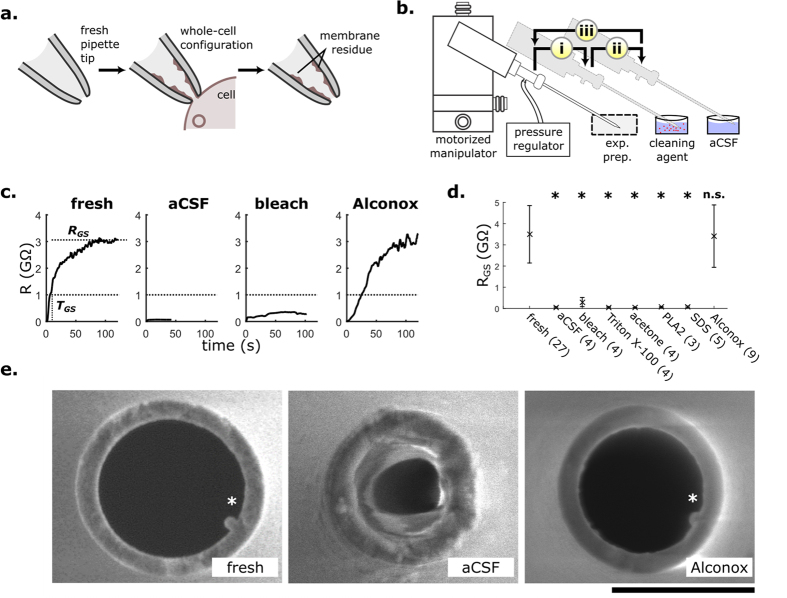Figure 1.
Cleaning patch-clamp pipettes (a). During a whole-cell patch-clamp recording, cell membrane bonds to the inner walls of the pipette. After the recording is terminated, membrane residue remains, preventing the pipette from being used for subsequent recordings. (b) To clean, (i) the pipette is moved from the experimental preparation to a wash bath where a cleaning agent is cycled within the tip, (ii) then to a rinse bath where the remaining cleaning agent is expelled into aCSF, (iii) and returned back to the experimental preparation. (c) Representative gigaseal formation traces. When using contaminated pipettes cleaned with Alconox, a multi-GΩ seal forms reliably, as would be expected when using a fresh pipette. On the other hand, cleaning with aCSF (artificial cerebrospinal fluid) and bleach does not result in gigaseal formation. RGS: maximum gigaseal resistance, TGS: time (s) to reach 1 GΩ (horizontal dashed line) (d). Of the six tested detergents and aCSF, only Alconox reliably achieved gigaseal resistances comparable to those of fresh pipettes (p < 0.001; one-way ANOVA with Dunnett’s post-hoc test. *p < 0.001; n.s.: not significant, p > 0.9). Data shown as mean ± s.d.; n for each cleaning agent is shown in parentheses. PLA2: Phospholipase A2; SDS: Sodium Dodecyl Sulfate. (e) Scanning Electron Microscopy (SEM) images of pipette tips. The Alconox-cleaned pipette tip resembles that of the fresh pipette. On the other hand, the pipette tip cleaned with aCSF is visibly contaminated with cell membrane residue. Pipette filament denoted with *. Scale bar: 1 μm.

